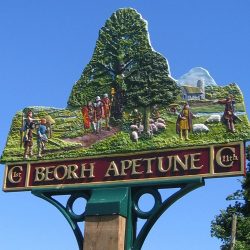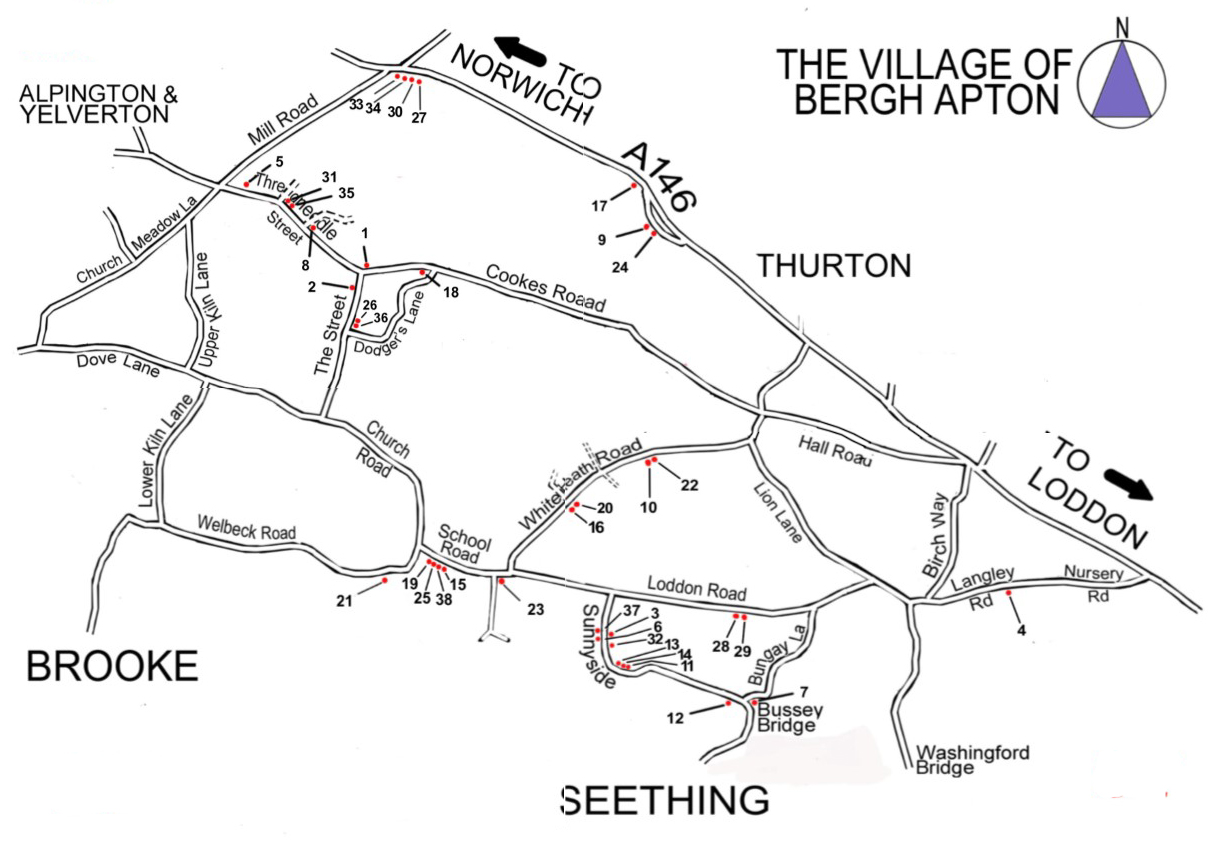This map of Bergh Apton shows you where all the commemorative figures are placed throughout the village. In the great majority of cases the figure stands outside a house where we know a man lived during his life in the village. Others stand where our research gives us confidence that we know the road but not the precise house. In only five cases are we uncertain of the right place; three are at the church gates and two are at the junction of Dodger’s Lane – that was once known as Weddup’s Lane.
The key is as follows:
1. ALEXANDER, Walter 2. ANNIS, Arthur
3. BEAUMONT, Robert 4. BLIGH, Alfred
5. BOGGIS, Alfred 6. BRACEY William
7. CARR, Leonard 8. CUBITT, Alfred
9. DAVEY, Edward 10. ETHERIDGE, Horace
11. EVERETT, Leonard 12. GILLINGWATER, Victor
13. GREENACRE, Henry 14. GREENACRE, Charles
15. HARBER, Freeman 16. HARVEY, Albert
17. HUNT, Ernest 18. KEDGE, Sidney
19. KEELER, Sidney 20. KING, Alfred
21. LEEDER, Ernest 22. MACE, Albert
23. MARKS, Sydney 24. MAYES, Harry
25. MITCHELL, Reginald 26. PARKER, Albert
27. PRESTON, John 28. ROPE, Alfred
29. ROPE, Leonard 30. STARMAN, William
31. STONE, Aubrey 32. STONE Thomas
33. THROWER, Herbert 34. THROWER, Walter
35. WALL, Clement 36. WEDDUP, Charles
37. WRIGHT, James 38. ALL WHO DIED
We have made a start in the quite daunting task of providing you with a page of information and captioned photographs for each man.
“Daunting” because there are thirty-seven of them and our knowledge of each man is comprehensive. Thus we must take care to tell you what we know but in a form and volume that will not overwhelm! The same is true, in the case of many of our men, of photographs.
But the task has begun and, in due course, we will have put on record something about each one of these men whom we honour in these pages.

